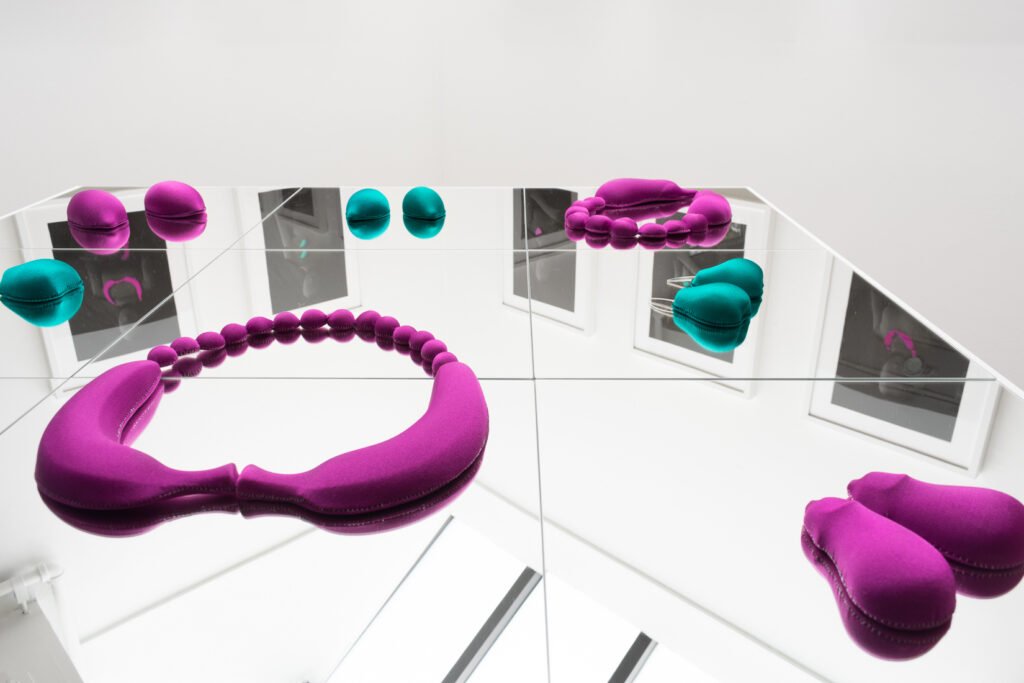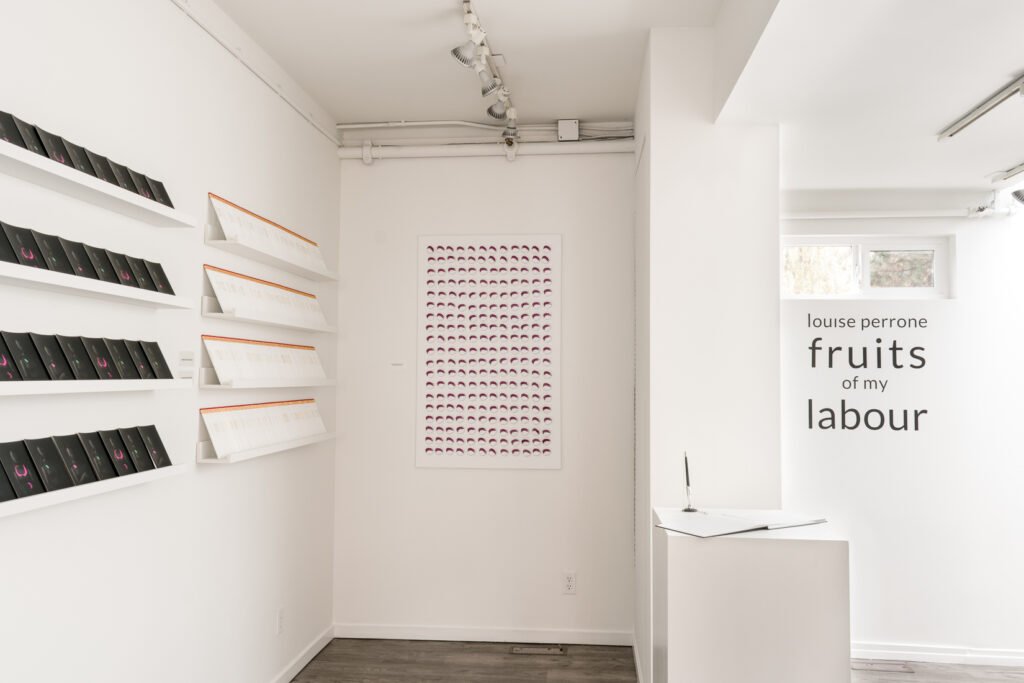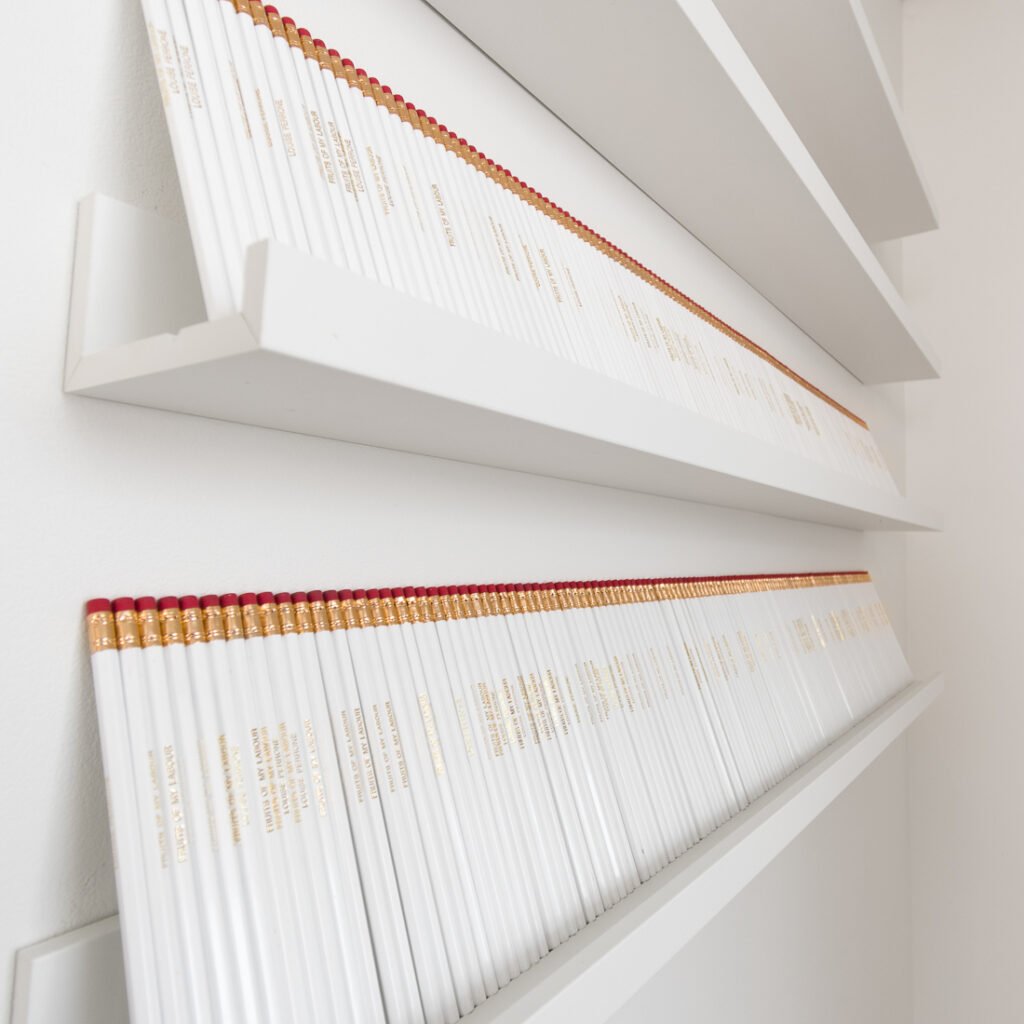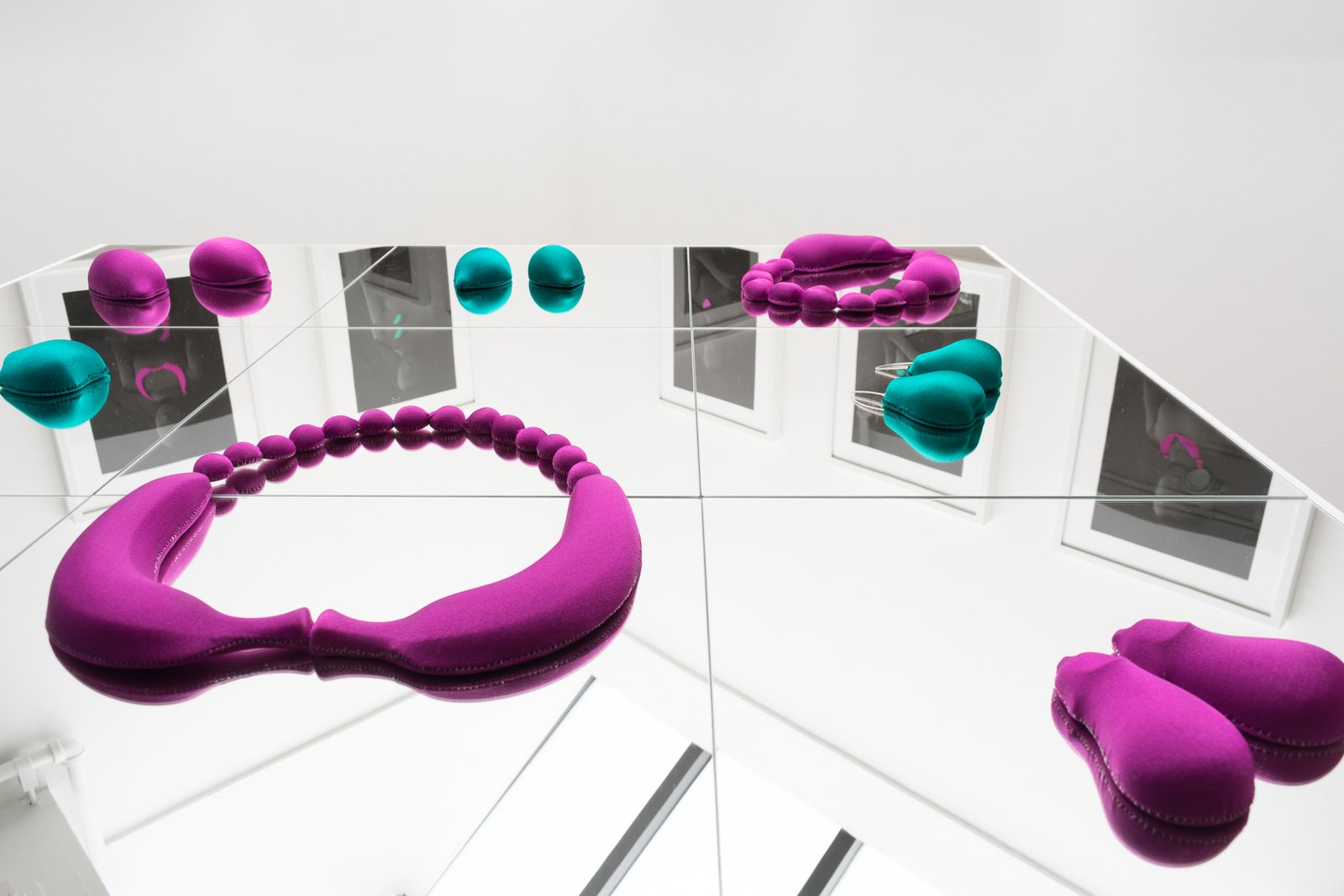In his review of Louise Perrone’s Fruits of my Labour, Critical and Curatorial Studies MA student Nathan Clark reflects on the seductive and consumable nature of Perrone’s works. As Clark so eloquently points out, Perrone bridges the space between gallery and gift shop, offering an accessible entry point to collection.
Fruits of my Labour is on view in our Gallery until November 25, 2021.
In the center of the gallery lays a mirrored grid, diagonal to the works on the walls: it is invitational and seductive, like a still pool of water with the enticing work of Louise Perrone’s emerging from the shimmering depths. Like the mirror of Narcissus, the viewer’s reflection merges with the displayed jewellery, performing a visual symphony where organic forms appear consumable. Yet, our desires are intervened by visible traces of the artistic gesture visible in the seams of the lycra wrapped fruit. Perrone has consciously chosen to reveal the thresholds of her work, intriguing interruptions within the exhibition space that allow the viewer to break away from their self-induced seduction with the jewellery.

“Like the mirror of Narcissus, the viewer’s reflection merges with the displayed jewellery, performing a visual symphony where organic forms appear consumable. .“

Every piece echoes across the room with the same question: what is a work of art to us, and how does our gaze interact with the commodifiable? Why do we yearn to make intimate relations with the consumable material world?
This dynamic space becomes an erotic cornucopia abound with fruits ripened with aesthetic beauty. The fruits stand as homage to the historic still life, once a marker of wealth and triumph. Perrone’s own practice mirrors this through her use of portraiture: with the anonymous figure merging into the black velour drapes, the jewellery becomes at once the subject and object of the portrait against this textile void.
These glistening spectres evoke small remnants of a human form which allure our gaze toward this garden of laborious delights. Perrone, through her use of sustainable, yet luxurious materials creates a visually stimulating experience of undulating forms that are tempting to touch and take hold of.
In many parts of premodern Europe, the paradigm of ad vivum (to make the visua tactile) took over the homes of the elite, merging the everyday world of nature into the glistening abstraction of the commodity form. These paintings became markers of our own finitude. Perrone has resurrected this existentialism through wearable mementos of our estrangement from these once untamed fruits, alluding to our divorce from the wilderness. Like the mirrored plinth, the anonymous figures produce an uncanny feeling between the tangible jewellery and the portraiture: they each become fruit baskets ripe with our sensuous desires, their lyrca and plastic skins mimicking our own flesh. Perrone’s jewellery embodies the dissolving sensuous boundaries between the visual and tactile; the tangible and abstract.
Perrone has created a space that removes the boundaries between the exhibition space and department store: here, there is no exit through the gift shop, for art and commodity become one harmonious spatial experience. Through the repetitions of pencils, cards, and buttons, everyone has access to an artwork, be it an original or readymade. In this visual realm, all products are artworks. The conventional ‘do not touch’ accessibility of the gallery space collapses, as every artwork comes with a price, ready to expand its reach into private and public spaces.


The reproducibility of these works reflects on Perrone’s own practice of challenging the idea of our preconceived relationship to art: the photographed reproductions of the jewellery become portraiture, which then reproduce into a commodifiable form of the postcard, on display just opposite of their larger forms. What then is an artwork, and how does the display of a commodified piece change our perspective of its cultural value?
Fruits of my Labour is a space dominated by the artist’s own activated artistic process, becoming a mosaic of reproduced forms that challenge the notion of originality, of artworks and the forms in nature which inspire us: the transcendental realm of high art and realism is brought down into an accessible, yet equally as captivating experience.

